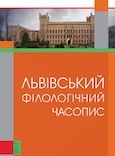EXPANSION OF CULTURAL CODES IN NATURAL LANGUAGE
Анотація
The study of the relation between language and culture as an ontologically related phenomenon began in the eighteenth century, but a system of concepts and terms that make it possible to consider language and culture in a single theoretical context was developed within the semiotics of culture only in the XX century. It was then established that ethnoculture was of a sign character, and this discovery made it possible to consider culture and language as an ontologically homogeneous phenomenon and to include the language in the system of cultural codes. The sign system serves as a means of generating speech and understanding its meaning. This is only part of the sign system’s features. Acting in this capacity, it acts as a code – a set of units and rules that allow you to create texts and interpret them. From these perspectives, text generation is seen as meaning encoding, and text understanding as its decoding. From this perspective, culture appears as a collection of codes. According to one of the generally accepted definitions of culture, it is a set of programs of human behavior. This article looks at the cultural code, namely its expansion into natural language. A verbal language is the main landmark system that forms the culture. Along with it, a number of non-verbal codes of similar nature are used. These are the so-called “image codes”. They include the various figurative systems within this ethnoculture that perform an allegorical and symbolic function. The image as a unit of the first signal system, that is, as a unit of sensory perception, becomes a sign. An imagery culture code is a system of images that serves as signs of other phenomena. Such semiotic subsystems of culture have been named cultural codes. Being the center of ethnoculture, the verbal ethno language absorbs many elements of subject and cultural codes. An expansion of cultural codes into the ethno language is observed. Images change the substance of the plan of expression and turn from the natural form of existence into the verbal form. Linguistic and cultural codes have national and cultural specificities. They reflect the peculiarities of the culture of the people who use them. Every native speaker of ethnoculture and ethno language learns these codes together with their mother tongue.



